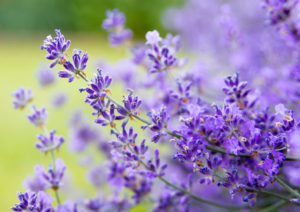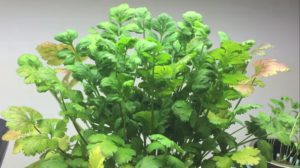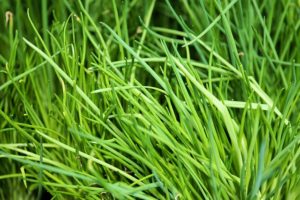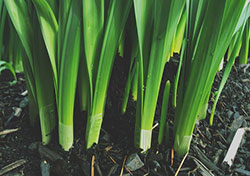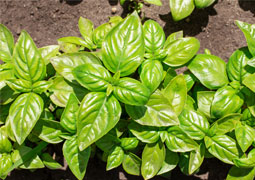Cilantro goes well with a lot of dishes. In fact, it is a very popular herb in the Thai and Mexican cuisine, and usually used alongside lemon, eggs, and beans such as pad thai, ground chicken, mexican beef tacos, salsas, etc.
This leafy herb does not only make your meal taste better but it is also known to be abundantly rich in Vitamin C, Provitamin A, and K so it is totally safe to consume it everyday.
But, of course, having to use this everyday as part of your meal means frequent visits to the farmer’s market or nearby grocery store which can be quite a work. So, the best way to sustain your kitchen with these fresh cilantro herbs is to plant and harvest them yourself.
So, if you are curious how to properly grow cilantro in your garden and how you would be able to harvest them in the perfect timing and without the risk of killing the entire plant, you should definitely read this entire article.
Growing Conditions
Cilantro is definitely one of the fastest growing herbs that you can plant in your garden. But before anything else, we should first discuss the difference between cilantro and coriander which usually brings confusion especially for beginner gardeners. Simply put, cilantro is referred to as the leaves of the plant while coriander is the seed. Both come from the same plant and are used as spice for cooking.
Plants That Grow Near Dill

Now that you have familiarized yourself with Cilantro, it is time for you to know more about its growing conditions and what are the considerations to be made for each of the growing aspects.
- Weather Conditions
Cilantro thrives on cold weather. The ideal temperature when growing this type of plant is between 10 and 29 degrees C (50 to 85 degrees F). Once the temperature increases beyond 29 C, there is a high risk that your cilantro will bolt. Similarly, planting cilantro during hot weather or in summer will make the cilantro leaves taste bitter.
- Sun Exposure
Since cilantro is very sensitive to heat, it can tolerate full to partial sun but ideally only for a few hours in the morning. On the average, 4 hours of direct sunlight is sufficient, but during the summer when the temperature is significantly high, the best thing to do is place your cilantro plant in areas with partial shade to avoid too much heat.
You’ll know that your cilantro plant is exposed to too much heat or direct sunlight when it quickly shoots up flowers and produces new seeds.
- Soil Requirements
Cilantro grows well in loamy, well-drained, and rich soil that has a pH between 6.5 and 7.0. About three weeks after the seeds have germinated, you may add some fertilizers or organic compost into the soil. You could also add mulch around the plants to avoid weeds from thriving.
- Watering
Make a regular watering schedule, preferably every week to keep the soil moist and loamy especially during the first three weeks. For best growth, it is recommended to allocate about an inch of water just enough to reach the plant’s deep roots but not too much that it will be soaked.
If you are planting your cilantro in a container, see to it that it has good drainage so excess water can seamlessly pass through.
- Spacing
When planting cilantro, it is most preferred to allot 6 to 8 inches distance from each other with space rows of 12 to 15 inches apart as cilantro can grow to as tall as 18 to 24 inches.
- Companion Planting
Cilantro makes a good companion to a lot of plants in a garden whether it is an herb, a vegetable, or a root crop, but the most recommended ones are basil, dill, parsley, and anise. During summer or when the temperature gets warmer, planting cilantro alongside your tomatoes can be very beneficial because of the natural shade that the former gives the latter.
Harvest Period
From the time of planting corianders, it typically takes 3 to 4 weeks before you can make your first harvest of fresh cilantro leaves, while corianders or cilantro seeds can be harvested in about 45 days.
Alternatively, you can measure your cilantro. When its height reaches 6 inches, it means that the leaves in the outer portion of the plant are matured enough to be picked.
Harvesting your cilantro regularly will result in a bushier and fast-growing plant. Preferably you should do this routine every week.
Process Of Harvesting
Harvesting cilantro can either be done in smaller or larger amounts. Knowing exactly how much cilantro you need is important as the volume affects the method that you will have to apply.
Harvesting smaller amount of cilantro
People who use cilantro as a cooking ingredient typically need only a smaller amount of this herb. In case you also plan on doing so, here are some of the steps that you need to remember when harvesting cilantro in smaller amounts.
- In harvesting cilantro leaves, always remember to start picking from the outer portion of the plant, leaving new growth behind. Older cilantro leaves tend to be more bitter and lose its fresh flavor, making it less desirable especially if you plan on using it as an added spice for your dish.
- Scissors or a knife will not be necessary in harvesting cilantro in small amounts. You can simply pinch the leaves out of the plant using your bare hands. To properly do this, trace down the stem of the outer leaves until you reach the node where new growth takes place.
- Pinch about 1 cm above the new growth to remove the older stems and leaves above it. Avoid aggressively pulling the stem off of the plant to avoid damaging and hindering the growth of new leaves.
Harvesting in larger amount of cilantro
Harvesting cilantro in larger amounts is recommended particularly during the cold season where they grow properly. The heat of the summer causes cilantro to flower and seed which is quite frankly not a good time for harvest. It is also best to trim down your cilantro plant regularly to encourage vigorous and healthy growth.
Here are the steps to make sure that you harvest your cilantro in large amounts the appropriate way.
- Before cutting any stems, examine your cilantro plant first. You will know that your cilantro is ready to be cut down its stems when its height reaches between 6 and 12 inches. Unless the stems of your plant are more than 6 inches, do not trim down the stems just yet.
- Because you are cutting an entire stem, you will be needing a sharp knife or a pair of scissors. When harvesting in larger amounts, prioritize snipping off the largest leafy stems and cut it from the base of the plant.
- Since your goal is to harvest cilantro without killing the entire plant, make sure not to harvest more than ⅓ of the plant to give it a chance to retain its strength and further its growth.
Storing And Using
There are 3 common ways to store freshly harvested cilantro so they’d still be useful for the coming days or weeks. Taking note of these methods will save your abundant supply of cilantro from being put to waste.
- Keep fresh cilantro in the fridge
- After washing off the harvested cilantro, prepare a medium to large jar and fill it with about 3 inches of water.
- Cut the bottom part of the cilantro, exposing the fresh part of it for good water absorption.
- Put the cilantro into the jar and cover it with a slightly loose plastic bag.
- Place it inside the fridge and use it fresh as you desire.
B. Freeze cilantro leaves
- Since you will be freezing your cilantro into ice cubes, washing it beforehand will not do much of a difference so this part will solely be based on your preference.
- Chop off the leaves of the cilantro leaves.
- Along with a few amounts of water, put these tiny bits of leaves into the ice cube trays.
- Store the ice cube trays in the freezer. These frozen cilantro should last for 2 months.
C. Dry the cilantro leaves
- After washing the cilantro leaves, pat them dry using a clean cloth or paper towel.
- Get rid of the stems and lay the leaves on a baking sheet.
- Bake the cilantro leaves for 20-30 minutes.
- Keep the dried cilantro in an airtight container. Dried cilantro usually lasts for a year.
Uses of Cilantro
If you want to explore your kitchen and put your cilantro into more flavorful uses, here are some of the things that you can do with your fresh or preserved cilantro:
- Toss cilantro into your vegetable salad.
- Make your own healthy green sauce out of pure cilantro
- Add an extra kick to your fried rice
- Garnish your sour cream and fish fillet with chopped cilantro
- Flavor your oil for added spice to your dish

